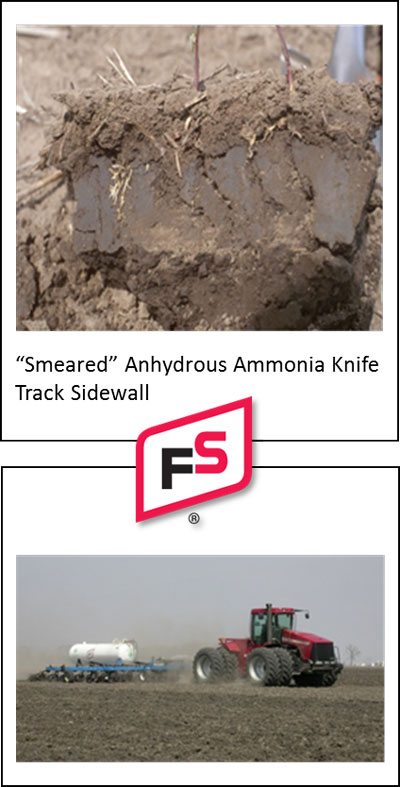
Avoid planting directly above where anhydrous ammonia has been applied this spring. Wet soil conditions at the time of ammonia application may result in side-wall compaction, or a smeared sidewall, leaving a vertical gap for free ammonia to collect.
If corn seed, young roots, or seedling plant comes into contact with free ammonia, plant injury or death may occur.
Limited research out of Purdue suggests a good crop response when a knifed N application is oriented within a few inches of the planted corn row.
If you apply spring anhydrous ammonia yourself, insert the knife at an angle to minimize the risk of root burn. Utilize automatic tractor guidance systems to place the planted corn row in close proximity to the application of anhydrous ammonia, without planting directly over the knife track.